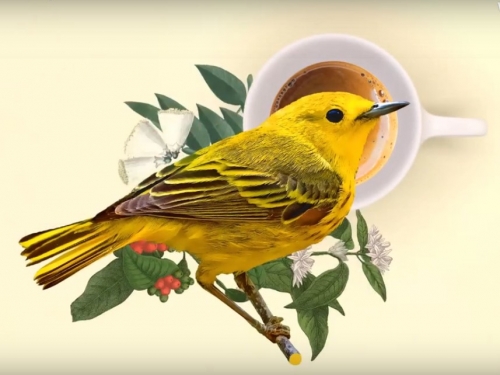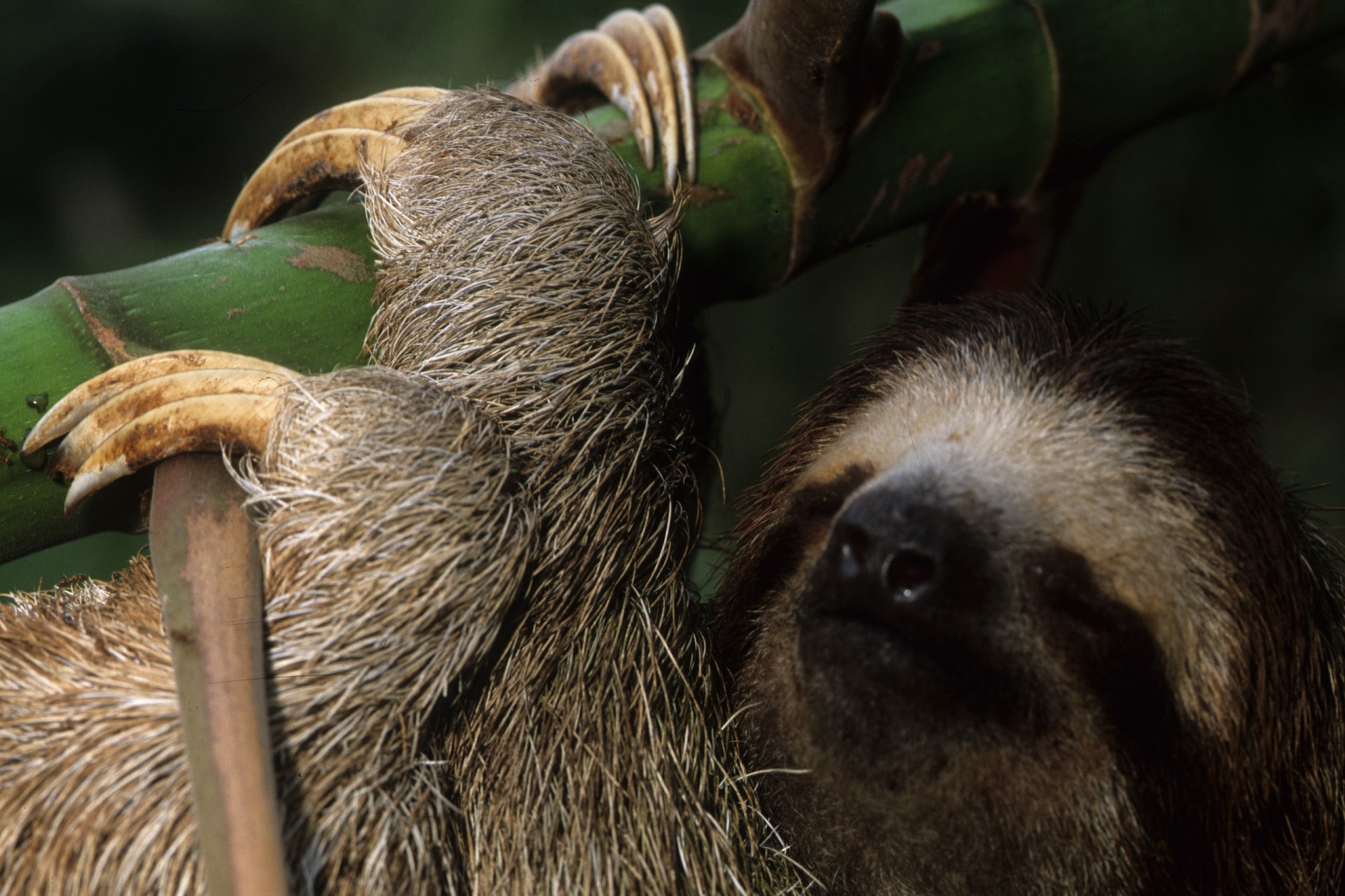
Animals and Ecosystems
Learn how the Smithsonian plays a role in protecting habitats and species and find out what you can do.

Between the largest natural history collection in the world, comprising 148 million items (of which 35 million are insects, some shown here), and research centers across the globe, the Smithsonian studies many fascinating animal species. Image: Chip Clark, Smithsonian National Museum of Natural History
The Smithsonian’s National Zoo and Conservation Biology Institute (NZCBI) hosts 2,200 animals comprising 400 species, but those aren't all the animals you’ll find the Smithsonian working with. From howler monkeys on Barro Colorado Island in Panama to swift foxes on the Montana prairie to river otters in marshes abutting the Chesapeake Bay in Maryland, the Smithsonian studies, monitors, and conserves a vast array of animal species around the world. The Smithsonian’s natural history collection, one of the largest in the world with 148 million items, also features a range of animal specimens representing much of the world’s biodiversity, both past and present. The collections include 35 million insects and half a million birds representing 10,000 species, or greater than 80 percent of the bird species on the planet.
Among the thousands of animals Smithsonian scholars interact with every day, here are six of the most unique and fascinating:

Like wet blankets wadded into junctions between tree branches, three-toed sloths dot tropical treetops in central America and are of keen interest to the scientists at the Smithsonian Tropical Research Institute in Panama. With their cute faces, hook-like toes, and slow movements, sloths are some of the most charismatic animals in the world.
But you might not know about the connection between their eating and bathroom habits and how this might help us fight disease.
Jonathan Pauli, a scientist from the University of Wisconsin Madison, investigated this just a few years ago as a visiting scholar at the Smithsonian Tropical Research Institute. He wanted to know why, to poop, three-toed sloths make a perilous, weekly journey down to the forest floor. He found that three-toed sloths consume highly nutritious algae from their fur and by descending a tree to defecate, they transfer moths to areas on their body where they will colonize, and in turn, produce nutrients that feed the algae that feeds the sloths. As a bonus, Smithsonian scientists in Panama, along with collaborators, found that the chemicals isolated from fungi in the fur of three-toed sloths in Panama have potential anti-cancer and anti-parasitic properties.

Even though they’re furless and mostly blind (and their name is a misnomer—they're not actually rats), naked mole rats are some of the most unique mammals on the planet. While most mammals their size live one to three years and can hold their breaths for maybe 30 seconds, naked mole rats live into their thirties and can go 18 minutes without oxygen. Their tolerance for low oxygen environments helps them survive in the deep tunnels they occupy below the northeastern horn of Africa.
Naked mole rats also don’t get cancer. That, plus their astounding longevity, makes them a valuable model for biomedical research. And, they’re the only true eusocial mammals, meaning they have a sophisticated social structure where naked mole rats care for their queen's offspring, a practice not unlike bee colonies.
(If you need a break during the day we recommend NZCBI’s naked mole rat cam.)

It turns out some ants are true farmers. Like humans, ants have cultivated varieties of crops that are not found in the wild. But unlike most human farmers, who grow plants and animals, ants are farming fungus.
Their approach is surprisingly sophisticated. Fungus-farming ants develop their own varieties of fungus by growing them in isolation underground, where they can't mix their genes with the outside world. The ants also harvest nutrients from the environment not to feed themselves, but to nourish their fungal crops.
Ted Schultz and Seán Brady at the Smithsonian's National Museum of Natural History got to the bottom of this unusual behavior by piecing together a family tree of fungus farming ants. They found that these ants began domesticating crops about 30 million years ago—beating human farmers by about 29.988 million years. Shultz wrote a book comparing human and ant agriculture and how these two wildly different animal species converged on similar behaviors.
Visit the O. Orkin Insect Zoo at the National Museum of Natural History to find more information about these unusual creatures.

At NZCBI’s Amazonia exhibition, visitors will find the arapaima, which is possibly the largest freshwater fish in the world and can live up to 20 years. Unlike most fish, which absorb oxygen through their gills, arapaima must breathe air from the surface. They have modified swim bladders that function as a lung, allowing them to survive out of water for up to 24 hours.
Arapaima also make surprisingly good dads! When predators approach, adult male arapaima will protect their fry (baby fish) by drawing them into their mouths and then will move them to a safe location.

Olympia oysters are the only native oyster on the West Coast. They used to thrive in areas ranging from British Columbia to Mexico, but nearly two centuries of overfishing and pollution has threatened their existence. In the San Francisco Bay, this mollusk is a foundational species, as it has an outsized role to play in the local marine ecosystem, particularly in terms of providing habitat for many small organisms. Its role in the Bay makes the species’ recovery that much more important.
The Smithsonian Environmental Research Center’s station in the San Francisco Bay area is studying ways to restore the local Olympia oyster population. They are creating artificial habitats (“oyster blocks” and “oyster orbs”) and planting rockweed algae to keep them from drying out during low tide. Scientists there also hope the Living Seawall Pilot Project, with its artificial underwater tiles that closely mimic nature, will help create more room for a thriving oyster habitat.

The National Museum of American History doesn’t seem like a place you’d find many animals, but where animals intersect with the history of American innovation, you might find an animal or two in their collection. Take, for example, OncoMouse. On April 12, 1988, OncoMouse became the first animal to be patented in the United States (U.S. Patent 4,736,866). OncoMice are genetically modified to have an active cancer gene, making them very likely to develop cancer, and scientists hoped this trait would make the mice useful test subjects for cancer research.
OncoMouse is now a part of the National Museum of American History’s medical science collection, available for researchers to study and learn from.
You do not have to visit the Smithsonian to see animals—or any other museum, zoo, or research site, for that matter. There are animals in every environment on Earth, as small as zooplankton, and at one time, as large as the megaladon and titanoboa. The next time you’re outside, look up to the sky, get down on your knees, and peer inside the bushes to explore what animals live near you. What do you think you’ll find?
